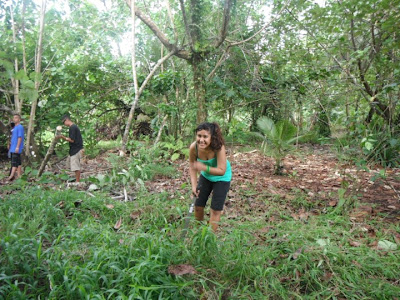Haruki cemetery cleaning for Ohigan

The ethnobotany class again cleaned the Haruki village cemetery during the week of Ohigan. As I sometimes do, I turned the camera over to the students. Some prove better photographers than others, I pick the better shots from among the dozens taken. Renee Iva clearing razor grass Although I prefer images of the students engaged in the activity of the class, they prefer social media ready posed pictures. Giftleen pulling weeds from amidst the flowers Rico with a pineapple top Renee Iva in action Rico Giftleen with a grass hook The session ended in the pouring rain, typical for ethnobotany class At the start of the term I always warn the students that ethnobotany class will involve getting wet, muddy, and sweaty. Whether wet from the rain, or wet from sweat under the intense equatorial sun, one way or another one is wet in this outdoor oriented course. Renee Iva and Keylafay at class end





